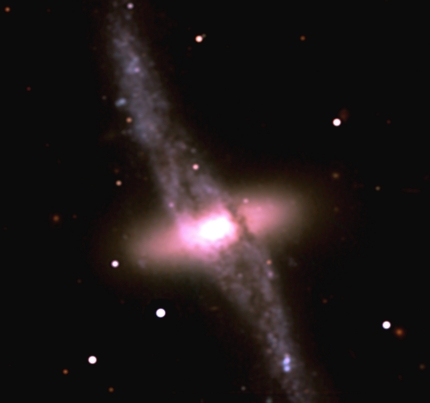
|
Credit: Very Large Telescope Project,
ESO
Explanation:
This
strangely distorted galaxy of stars is cataloged as NGC 4650A.
It lies about 165 million light-years away in the southern
constellation Centaurus.
The complex system seems to have at least two parts,
a flattened disk of stars with a dense, bright, central core and
a sparse, sharply tilted
ring of gas, dust and stars.
Observations show that the stars in the disk
and the stars and gas in the
ring really do move in two different, nearly perpendicular planes,
probably as the result of a
past galaxy vs. galaxy collision.
The observed motions within both disk and ring also indicate the
presence of "dark matter" - an unseen source of gravity which
influences the movement of this system's visible stars.
Over the decades evidence that
our Universe is largely
composed of such dark matter has grown while the
nature of dark matter has
remained a profound astrophysical mystery.
The picture was constructed from images made using part of
the European Southern Observatory's (ESO) new
Very Large Telescope system now undergoing
its testing phase.
|
January February March April May June July August September October November December |
| ||||||||||||||||||||||||||||||||||||||||||||||||
NASA Web Site Statements, Warnings, and Disclaimers
NASA Official: Jay Norris. Specific rights apply.
A service of: LHEA at NASA / GSFC
& Michigan Tech. U.
Based on Astronomy Picture
Of the Day
Publications with keywords: dark matter - colliding galaxies
Publications with words: dark matter - colliding galaxies
See also:
